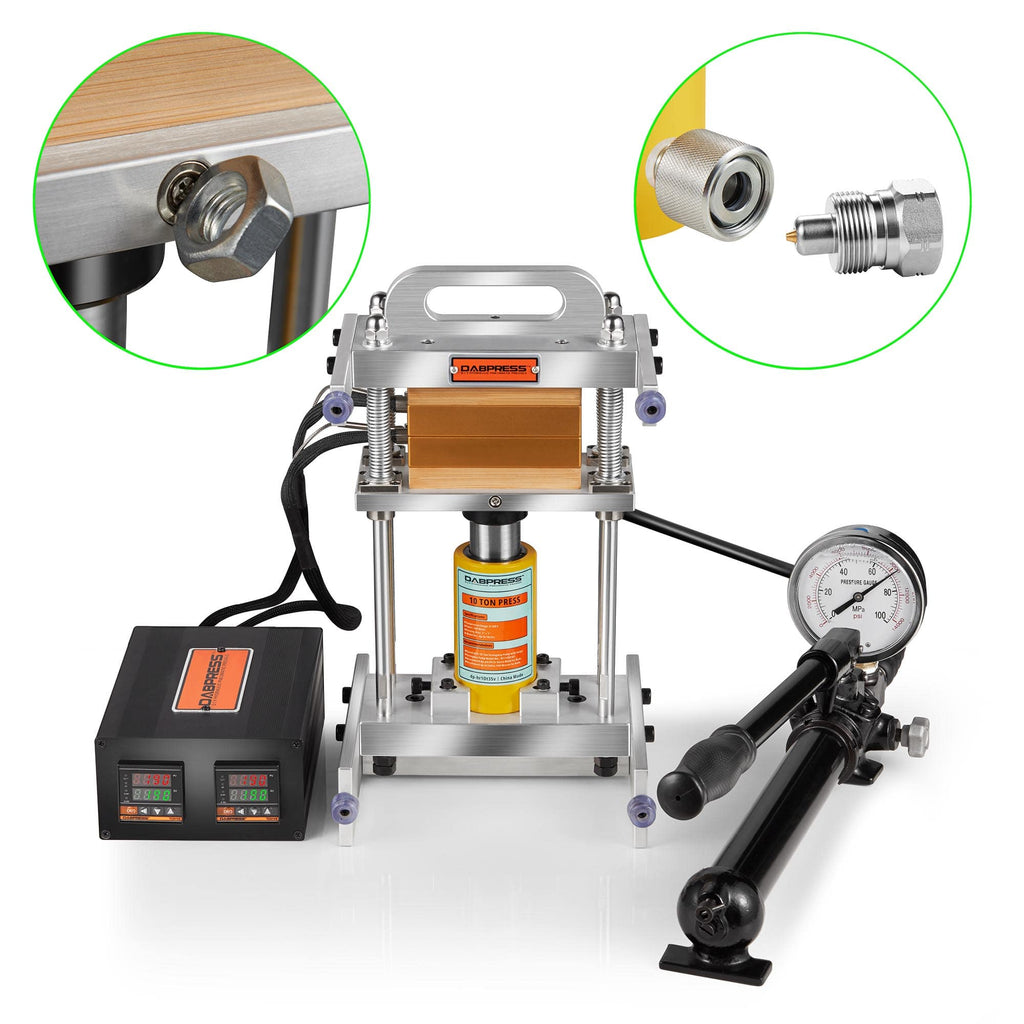PSI Calculations - 10-Ton Driptech Rosin Press
Posted by DABPRESS TEAM

Regarding 10-ton rosin press dp-hr10t35 / dp-hr10t35v with Dabpress hydraulic hand pump with gauge -
There is a formula you will need to use to figure out the exact pressure (PSI) at the material, or bag, the PSI reading on the gauge is only measuring the pressure in the hose, so the extra math is required.
Each hydraulic cylinder has it's own cylinder effective area used in calculating pressure. In the case of the 10-ton cylinders, the cylinder effective area is 2.25. That bit of information helps us calculate the total force appllied based on the PSI measured on the pressure gauge
Pressure on gauge x 2.25 = total force delivered
i.e. 1000 PSI on gauge = 2250 lbs of force delivered
So we must also know the surface area of our material. An example, puck size of 2x3 = 6 sq/in of surface area
If we wanna put 1000 PSI on the bag for a 2x3" puck with 6 sq/in of surface area, we need 6000 lbs of force delivered.
6000 lbs / 2.25 = 2666 PSI on gauge
You can do this math with every different puck size you will be pressing and will always give the desired pressure at the bag.
As for yielding your starting material, you will want to be using around 1000-1500 PSI at the bag for flower, and 500-750 PSI at the bag for hash. Finer material can be pressed at the lower pressures at the bag such as high grade sift or hash such as full melt product.
Temps are best made with flower from 180F-220F, for hash and sift 150-190F.
Hydration of your flower is crucial, 62% RH (relative humidity) is needed for proper yielding. We recommend using a two-way humidipack if your flower is too dry.
For loading pucks into the filter, we do include some thin clear plastic sheeting. You can bend or fold them into shape for you to help you slide the puck into the filter quickly after it is pre-pressed. I usually slide the sheeting into the filter, then push the puck through the sheeting to the bottom of the filter, then pull out the sheeting.
Some material will want to spring back quickly after ejecting from the mold, this is usually the case with equatorial varieties that tend to not want to stick together as well as the denser material.
Any questions feel free to ask!
Kind Regards,
James
TAGS:


